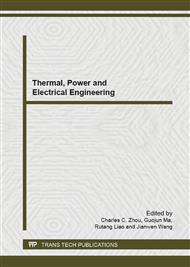p.392
p.397
p.402
p.407
p.413
p.417
p.421
p.426
p.432
Comparison of Finite Difference and Finite Volume Method for Numerical Simulation of the Incompressible Viscous Driven Cavity Flow
Abstract:
In this paper, finite difference method and finite volume method are applied to incompressible viscous driven cavity flow problems, and their results are analyzed and compared. As for the finite difference method, second-order upwind and second-order central difference format are applied to the discretization of the convection and diffusion items respectively. For the finite volume method, three different ways are utilized to discretize the control equations: QUICK, second-order central difference and third-order upwind formats. The results show that computing time as well as calculation accuracy exponentially depends on Reynolds number, discrete formats and grid numbers.
Info:
Periodical:
Pages:
413-416
Citation:
Online since:
August 2013
Authors:
Keywords:
Price:
Сopyright:
© 2013 Trans Tech Publications Ltd. All Rights Reserved
Share:
Citation:


